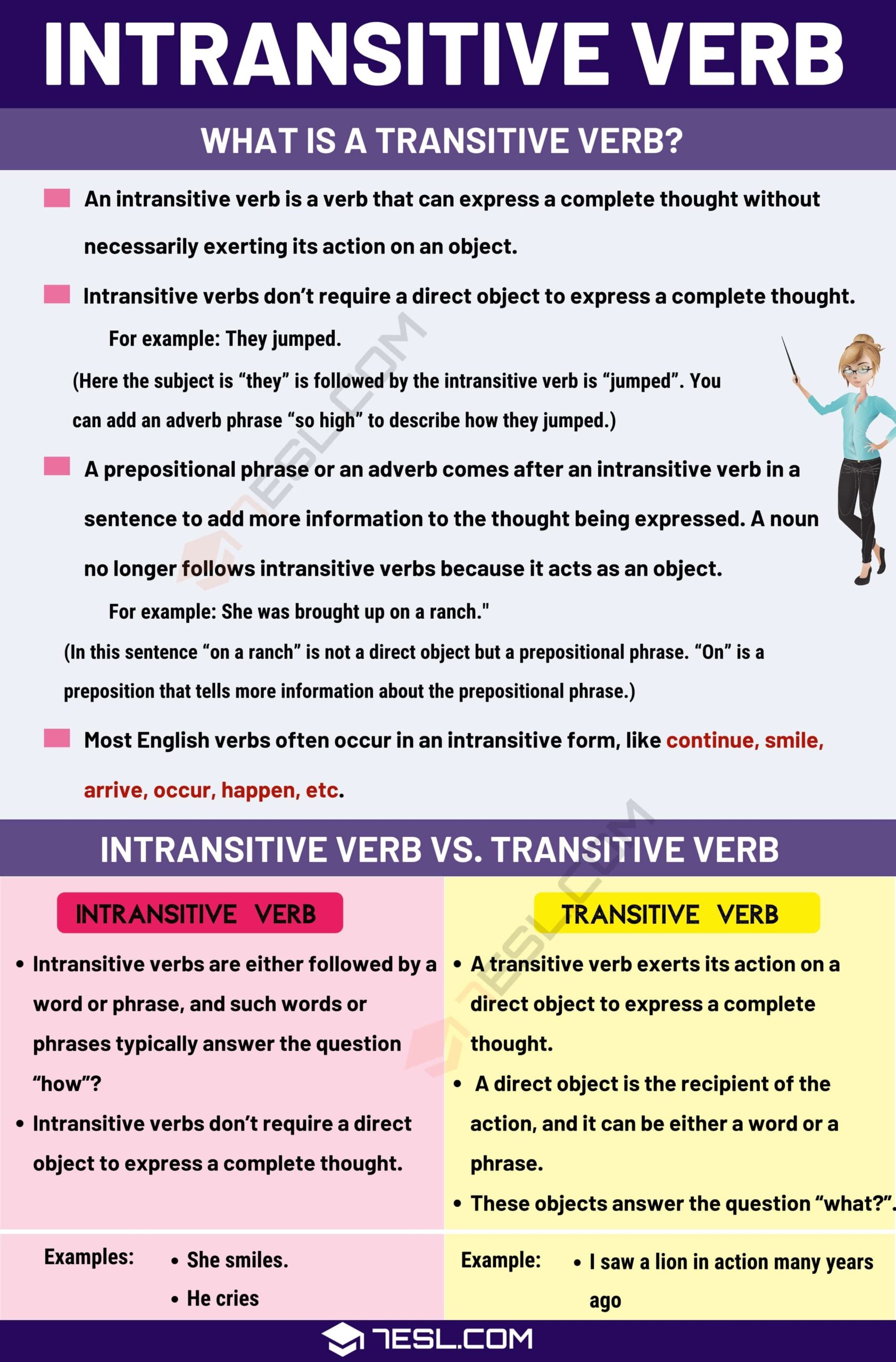Transitive and intransitive sentences are common in the English language. Understanding the difference between the two can help improve your writing and communication skills. Transitive sentences involve an action being done to an object, while intransitive sentences do not have a direct object. Let’s explore some examples of both types of sentences.
In a transitive sentence, the verb is followed by a direct object that receives the action of the verb. For example, “She ate the apple.” In this sentence, “ate” is the verb, and “apple” is the direct object receiving the action. Here are a few more examples of transitive sentences:
- He read the book.
- The dog chased the cat.
- We painted the house.
On the other hand, intransitive sentences do not have a direct object following the verb. The action of the verb does not transfer to a specific receiver. For example, “She sleeps peacefully.” In this sentence, “sleeps” is the verb, but there is no direct object receiving the action. Here are some examples of intransitive sentences:
- The sun shines brightly.
- They laughed loudly.
- The flowers bloomed beautifully.
It’s important to note that some verbs can be both transitive and intransitive, depending on how they are used in a sentence. For example, “He runs every day” is an intransitive sentence because there is no direct object. However, “He runs a marathon” is a transitive sentence because “marathon” is the direct object of the verb “runs.”
Understanding the difference between transitive and intransitive sentences can help you use verbs more effectively in your writing. Whether you are describing an action with a direct object or without one, being aware of these sentence structures can enhance the clarity and impact of your communication.
In conclusion, transitive and intransitive sentences play a crucial role in English grammar. By practicing with various examples, you can improve your sentence construction and convey your message more effectively. So, next time you are writing or speaking, pay attention to whether your verbs are followed by direct objects or not, and enhance your language skills.
